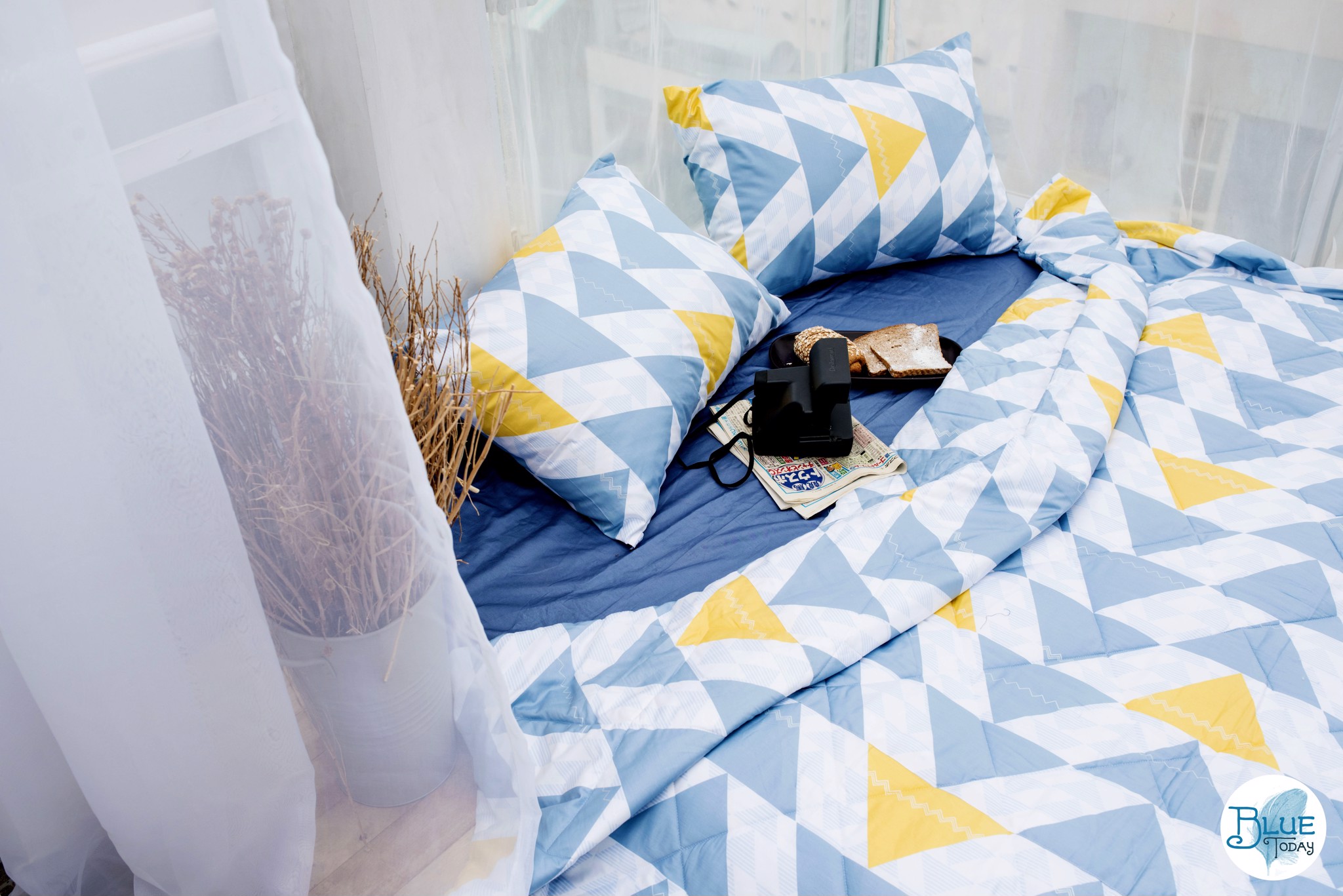
Cleaning the kitchen before and after cooking, cleaning household items, washing and cleaning regularly to remove dust are the most basic measures to help reduce bacteria and reduce the risk of diseases.
Blankets and bed linen
With a room with high humidity, this is the ideal environment for mold growth.
According to a study by YouGov in 2014, 10% of Britons changed bedding once a month.
Bed linen about 1-2 weeks of use, the naked eye will not be dirty, but the reality is not so. When we sleep, the skin regenerates itself by removing dead skin cells. Within days or weeks these skin cells accumulate bacteria that will cause skin and respiratory illnesses. ..
Therefore, you should replace the bed sheets regularly, preferably once a week. In addition, blankets and pillows should also be cleaned about 3-4 times per year. After waking up, you should not flatten the blanket immediately. Turn over so that waste such as sweat and moisture during sleep are released.

Drapes and bed linen are rich in bacteria
According to the study, a mattress used for about 8 years will contain more than 4.5 kg of dead skin cells. Clean the mattress every 3 months and clean the mattress using a vacuum cleaner, disinfectant.
Appliances such as toothbrushes, combs, ...
Toothbrush contains many types of bacteria. Wash your toothbrush after use, and replace the brush about every 3 months.
Combs are also home to a variety of bacteria, which can cause skin and hair problems. After combing the hair, remove the hair that remains on the comb and clean the comb after 1-2 weeks of use.
Cosmetic residues can stick on the hair dryer, hairdressing equipment is a place to hide many bacteria should be cleaned about once a month.
Makeup such as make-up brushes, brushes, brushes, etc. is used directly on the skin if not cleaned regularly will cause skin diseases such as acne, dermatitis, pore inflammation, etc. once a week. If anyone has allergic skin hygiene once a day. Always remove old expired cosmetics, as it contains a lot of harmful bacteria.

Make-up such as make-up brushes, brushes, brushes, ... is a place to store more bacteria
Shavers will cause skin irritation, scratches on the skin, etc. If not properly cleaned, it is best to remove the hair, sticky items on the shaver after each use and clean the blade. follow the instruction.
Cotton towels
We think that when washing your hands, washing dishes, .. all clean, then use a towel to dry, then everything is clean without bacteria, so towels are not affected at all, but the reality
We can not completely clean the bacteria even after cleaning and when the towel is dry, the towel will be wet, which will allow the bacteria to grow on the towel. Wash towels, dish towels, etc. 2-3 times a week.
Mollis cotton towels have high antibacterial properties
Towels are the most abundant bacteria that cause skin diseases, so when bathing you have to dry the towels in a dry place, under the sun. It is best to wash the towel at least once a week. Hand towels in the bathroom also need to be cleaned about 2-3 times a week like a towel in the kitchen. According to research should change new scar every 3 months / times.
Foot wipes are used to dry your feet wet, so every time you clean your feet, dust and bacteria will cling to your feet. It is best to wash the towel once a week.
Hygiene
Often we use the weekend to do laundry, clean the house and let the air in the house be ventilated respiratory diseases such as asthma, allergic rhinitis, ... the best when cleaning should open doors, windows to reduce dirt in the home while reducing bacteria by sunlight.

Regular housekeeping should be used to reduce pathogenic bacteria
Wash your hands frequently at least 6 times a day, after using the toilet, each time before preparing food, cooking, preparing to eat, where to go, etc.







